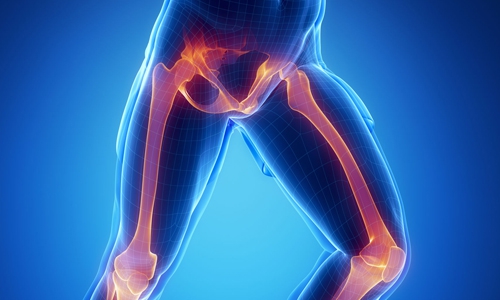
These symptoms that include pain that radiates from your lower (lumbar) spine to your buttock and down the back of your leg are common in patients with spinal problems. This pain is known as sciatica, and it occurs as a result of compression of the nerves that come out of the lumbar spine. Sciatica most commonly occurs when a herniated disk in the spine (nucleus pulposus herniation) compresses part of the nerve. This causes inflammation, pain, and often some numbness in the affected leg.
However, this type of pain could be caused by other issues, as well. In some cases, a muscle located near the buttock known as the piriformis muscle, contracts and compresses the sciatic nerve, resulting in sciatic pain. This condition can even be found simultaneously with a herniated disc. It can be caused by sitting or standing for a long time or from falling on the buttocks. Therefore, when a patient is experiencing pain radiating down the legs, a physical exam is necessary to distinguish this muscular disorder from a herniated disc, each of which has different a treatment and prognosis.
Another possible cause of pain in the hip area that radiates down the legs is Sacroiliac Joint Dysfunction, which is related to improper movements in a joint around the hip. Therefore, with various possible causes for low back and leg pain, it is important to see a doctor for a proper physical examination.
Treatment of sciatic pain depends on the underlying diagnosis
- Short-term use of oral pain medication may be used as needed, such as NSAIDs, muscle relaxants, or opioids.
- For people with tight hip muscles, exercises work very well. Particularly for patients with herniated discs, back exercises are important.
- In cases of herniated discs or spinal collapse onto a nerve, a procedure known as Interventional Selective Nerve Root Block, in which an injection is used to provide pain relief, can help treat and reduce pain resulting from specific nerves. This treatment allows for less dependency on painkillers, which also affect other systems of the body, while also lowering—or at least delaying—the need for major spinal surgery.
Pain relief is provided by Selective Nerve Root Block injection, because it reduces inflammation of the nerve, reduces swelling, and it increases blood flow to the nerves, which can remove toxic proteins (e.g., IL-1 or TNF) that cause chronic pain. These mechanisms are used to explain the efficacy of this treatment, which involves injecting anti-inflammatory drugs mixed with numbing medication. This medicine is injected around a very specific nerve root/spinal nerve in an amount especially determined by the doctor. Therefore, it’s more effective and specific than injecting medication intramuscularly or intravenously. And, since it’s an outpatient procedure, patients can go home or return to work afterwards. Furthermore, it reduces the possibility that major spinal surgery is needed, especially in cases where the bone compression on the nerve is not too severe. With targeted delivery of medication to the affected nerves, this treatment has been shown in Europe and America to be effective.
- Once a physician has determined that Selective Nerve Root Block treatment is needed, the first step in the procedure will be to inject a local anesthetic around the site to reduce discomfort. Then, a needle will be used to inject 2-5 cc. of the anti-inflammatory drugs at various points around the site.
- Imaging technology will be used to guide the injections and correctly locate the nerve, which helps to improve the accuracy and effectiveness of the treatment.
The injection treatment does not result in any scarring, such as is found in surgery, and the patient can go back to regular daily activities the next day. Another benefit of this treatment is that any exercise and physical therapy that are recommended by the doctor are still possible, usually without leg pain. In fact, recovery from this condition is possible with weight loss and consistent physical therapy.